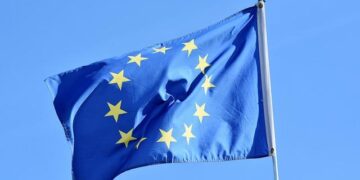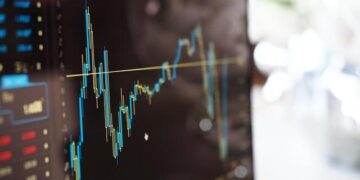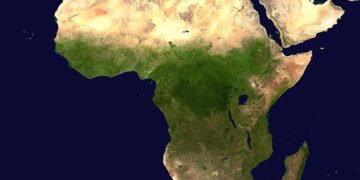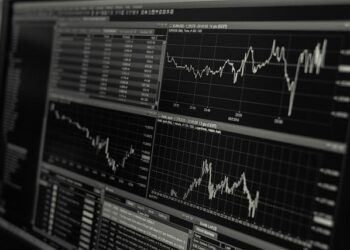Iran’s economy is facing a deepening crisis marked by a sharp collapse in investment and soaring inflation rates, sending shockwaves through both domestic markets and international observers. As new data reveals dwindling foreign and domestic capital inflows alongside escalating prices for basic goods and services, the economic turmoil threatens to exacerbate social challenges and undermine efforts at recovery. This article examines the root causes of Iran’s economic downturn, the impact on everyday Iranians, and the potential implications for the country’s political and economic future.
Iran’s Investment Sector Faces Sharp Decline Amid Economic Uncertainty
The investment climate in Iran has taken a significant hit as economic instability deepens. Foreign and domestic investors alike are retreating, driven by heightened inflation, currency volatility, and restrictive regulatory measures. Key sectors such as manufacturing, energy, and technology have witnessed a stagnant flow of capital, raising concerns over long-term growth prospects. Amid worsening economic sanctions and political tensions, investor confidence remains at a historic low, underscoring the challenges of revitalizing Iran’s once-promising market.
Major factors contributing to the downturn include:
- Rapid inflation eroding profitability and purchasing power
- Unpredictable currency fluctuations undermining planning
- Increased governmental controls limiting foreign participation
- Deterioration of diplomatic relations impacting trade agreements
| Investment Sector | Decline in Capital (2023) | Inflation Impact (%) |
|---|---|---|
| Energy | 35% | 48% |
| Manufacturing | 42% | 52% |
| Technology | 28% | 57% |
Inflation Surge Erodes Purchasing Power and Deepens Public Hardship
As inflation rates continue to climb at alarming levels, everyday Iranians are facing a rapidly diminishing standard of living. The rising cost of essential goods such as food, fuel, and housing has left families scrambling to adjust their budgets, often sacrificing basic needs. Markets have seen sharp price spikes, with some staple items increasing by over 40% within just six months. These soaring prices have not only eroded the purchasing power of salaries but have drastically deepened the economic hardships faced by the middle and lower-income classes.
The economic strain stretches beyond individual households, impacting the broader public well-being. A recent survey highlights the widespread effects:
- Reduced Access to Healthcare – Increased costs have led many to postpone medical treatments.
- Rising Unemployment – Businesses struggle to maintain operations amid inflation-driven costs.
- Increased Poverty Rates – More families are slipping below the poverty line due to spiraling expenses.
| Category | Price Increase % (6 Months) |
|---|---|
| Bread & Cereals | 38% |
| Vegetables & Fruits | 45% |
| Fuel | 52% |
| Housing Costs | 33% |
Strategies for Stabilizing Iran’s Economy and Restoring Investor Confidence
To address the profound economic challenges, policymakers must prioritize structural reforms that enhance transparency and reduce state intervention in markets. Encouraging a regulatory environment that safeguards property rights and enforces contracts will be critical in attracting both domestic and foreign investors. Additionally, diversifying Iran’s economic base beyond oil exports by supporting technology, manufacturing, and agriculture sectors can mitigate external shocks and enhance long-term growth stability. Engaging with international financial institutions for technical assistance while cautiously navigating geopolitical tensions can further bolster economic resilience.
Restoring confidence requires a multi-faceted approach, including pragmatic monetary policies aimed at curbing inflation and stabilizing the national currency. Implementing a credible inflation-targeting regime and strengthening the independence of the Central Bank are essential steps. Moreover, the government should focus on rebuilding the banking sector’s health, tackling non-performing loans, and improving access to credit for small and medium-sized enterprises (SMEs). Below is a snapshot of key stabilization measures and their anticipated impact:
| Measure | Short-Term Impact | Long-Term Benefit |
|---|---|---|
| Monetary policy tightening | Reduced inflation | Currency stabilization |
| Reform of state-owned enterprises | Improved efficiency | Increased investor trust |
| Support for SMEs | Job creation | Diversified economy |
| Enhanced financial transparency | Investor reassurance | Greater capital inflows |
To Conclude
As Iran grapples with a deepening economic crisis marked by plummeting investment and soaring inflation, the challenges ahead remain formidable. With mounting international pressures and domestic uncertainties, the country’s path to recovery is fraught with obstacles. Analysts warn that without substantial policy reforms and renewed investor confidence, Iran’s economic instability may persist, further impacting the livelihoods of millions. The coming months will be critical in determining whether Tehran can navigate these turbulent waters or face prolonged economic hardship.































